|
Kidlit 411 is turning one! To celebrate, this fantastic and free website features relevant information on children's publishing and they are giving away prizes to their loyal followers. Join in the fun and win signed books, courses and much more.
Most of the information is from America and worldwide. You can subscribe to their blog and get the weekly updates sent straight to your Inbox. Kidlit 411 also has some great interviews with authors and illustrators.
0 Comments
I had another wonderful year reading many great children’s titles. Here are my top picks. They may not have been published in 2014, but I read them this year and fell in love with them. Picture books The Mighty Lalouche by Matthew Olshan (Author), Sophie Blackall (Illustrator) I love this book because it works on so many levels. Set in Paris, Lalouche is a postman, but when electric cars replace his job he turns to boxing to make a living. He is nimble and small, yet mighty. Why it works? It has an adult main character, but children will relate to being overlooked because of their small size. Lalouche doesn’t give up. The boxing is child-friendly punch ups and you want to barrack for Lalouche! Great history lessons at the end of the book. The illustrations are whimsical of Paris.  Spork by Kyo Maclear (Author), Isabelle Arsenault (Illustrator) Spork’s mum is a spoon and his dad is a fork. They love him just as he is, but the other cutlery don’t see where he fits as he is neither a spoon or a fork. Why it works? Children will relate to their parents loving them for who they are, but struggling to fit in socially and the attempts Spork goes to connect with the other cutlery. I love that the book doesn’t paint over the lows of the character, yet Spork finds his own special place in the world when he is the only one who can help. Great twist at the end!  Dogs Don’t Do Ballet by Anna Kemp (Author), Sara Ogilvie (Illustrator) Biff is a dog who doesn’t do dog stuff and all he wants to do is ballet. Why it works? A dog who is dog-darned determined to be a ballet dancer. Children will benefit from the resilience to keep going when everything tells you should give up. Early chapter books/Early Junior Fiction Friday Barnes: Girl Detective by R.A. Spratt My new favourite series of books. Friday is a very mature girl who solves a bank robbery and uses the reward money to send herself to the most exclusive school, Highcrest Academy. On arrival, Highcrest is a crime hot-bed and there are many mysteries for Friday to solve. Why it works? Great character name – Friday! Friday is smart, but socially awkward with a dead pan sense of humour. She doesn’t compromise on who she is, what she wears (I love her hat) and she finds her own feet at school. Friday has one great friend and roommate Melanie, a fantastic arch nemesis in Ian Wainscott, a supportive uncle, clueless scientist parents and many mysteries to solve, including a Yeti. I can’t wait to read book two, Under Suspicion. Watch out Sherlock Holmes!  Jake in Space: Moon Attack by Candice Lemon-Scott Another great series. Moon Attack is the first in a series of six books to be released in 2014 and 2015. Jake is sent to remedial driving school on the moon when he has failed his license again. Why it works? Kids will love the fact that young boys and girls learn to drive space crafts much earlier than they are allowed to in real life. They will love summer camp, but set on the moon and that people now live on other planets in the solar system. It is fast paced, fun and a great mystery for Jake to solve. Older Junior Fiction My Life is an Alphabet by Barry Jonsberg Candice Phee is a 12 year old girl and she is asked to submit a journal based on the 26 letters of the alphabet. Candice is the glue that holds her family together and brings joy to those around her through all the ups and downs in her life. Why it works? Candice is a strong, caring character that is well developed, quirky and yet relatable to all people. Despite being a misfit, she doesn’t see it that way in her world and she does what she can for those around her. I love the recount style of the book and each journal entry has a fully developed storyline and idea. Funny and poignant, a great read. Young Adult The Fault in our Stars by John Green Hazel has terminal cancer, but has received treatment which has extended her life. At a Cancer Kids Support Group Hazel meets her best friend Augustus Waters. Why it works? Just read my whole blog post dedicated to it. So what were your top reads for this year? What a scorcher! Sweat dripped off my forehead. A massive heatwave hit Queensland. The hottest Australian Christmas on record ever and here I am stuck driving out to the middle of whoop-whoop with my whole family.
“How much longer to Uncle Ned’s and Auntie Karen’s farm?” I complained. “Jake, you know Blackall is far away!” said Mum. “It’s not all black. It’s all dust. It should be called Dustall,” joked Dad. “Ha, ha. That’s so corny, Dad,” said Lisa. “Mum, can you turn the air-conditioning up?” I asked. “Rrrr,” groaned Mum, giving me the not-one-more-word look. “I’m almost as scorched as a scorched almond!” said Dad, laughing at himself. “Seriously Dad, enough. Those aren’t even jokes,” said Lisa. Whoosh! Splutter-splutter STOP! Steam poured out from under the hood. That’s not good, I thought. Dad popped the bonnet and checked the engine. “Radiator’s gone! I’ll need to call for help.” This was perfect! What’s worse than being stuck in the outback? Not going out or heading back home, I thought. Chug-chug-chug! Was it a mirage? No a miracle on wheels. A blurred haze of rusted steel chugged straight towards us. “Hi Jensen’s. I’m Steve. You’re heading to Ned’s and Karen’s for Christmas?” called Steve from his old tractor. “Too right. We’re having a bit of car trouble,” said Dad. “Can you give us a tow?” “Sure can! I’ll have you hooked up in no time.” And we chugged slowly behind Steve all the way to Ned and Karen’s farm. “Thanks mate,” said Dad, shaking Steve’s hand. “Come in for a drink?” “No, I have to get to my own celebrations. Glad to help.” “Well that’s an entrance,” cried Uncle Ned. “Merry Christmas!” shouted Auntie Karen, squeezing me so hard and covering me in kisses. “Where’s the kids?” asked Dad. “Oh, floating up in the dam. That’s where we set up Christmas!” I couldn’t have been more wrong. We floated in tubes on the dam, barbecued Christmas lunch, ate under the tarp and slept in our swags under the stars. It was a dam good Christmas! For some writers when you hear the word ‘critique’ you want to bite off all your nails. I still get a small amount of butterflies in my stomach before a critique and even more nervous when I sit in front of an editor. While I think it is nerve wracking, I have learned so much from other people reading my work in my writing group, swapping critiques with friends over email and for paid editor appointments. How to get the most out of a critique?1. Sit in on a critique session at a writing group first to see what the process is like. Have agreed rules. 2. Find someone you trust or a group of writers you feel comfortable showing your work to. Talk about your expectations and then swap critiques. 3. Be open to what others have to say and listen to them fully. You never know which bit of advice will pay off. One editor appointment I went to last year didn’t feel so great. But she gave me one fresh idea that helped transform a whole manuscript. 4. You don’t have to agree. I sometimes get varying critiques. While helpful, it can be confusing too. 5. I choose which pieces of advice I think will work. Sometimes I try different things and it works and other times it doesn’t. 6. It’s okay to put your work away. Sometimes you develop a love/hate relationship with your work. One editor asked me to do something completely amazing and fresh to a manuscript I showed her. It was confronting. In fact, I was so scared it sat in a drawer for five months. Today, I pulled it out for the first time to write it. When to get a paid critique? I recently sent a picture book off for a manuscript assessment. I was ready for a good critique. I had worked on the manuscript and got is as polished as I could. I’d had advice from editors and had it critiqued in my writing group and I was now stuck. To be honest, I was a little nervous. I wasn’t sure what to expect, but I was pleasantly surprised. I was greatly encouraged by the feedback and instead of sending me into a hole to hide, I actually couldn’t wait to get back to writing. It was the best money I have spent. It really helped me to see the strengths and weaknesses of my manuscript. I can tell you I have learned so much from other writers letting me see their work. It is a privilege and it encourages me to show my work to them. Hopefully, you will enjoy critiquing, as much as you can.
Do you have any tips on how to survive a critique? Share your tips below. As soon as you start to dip your toes in the kid lit world, you quickly make a lot of friends with rather friendly, zany, fun, creative types like yourself who like to call themselves writers, illustrators or both. You also end up attending their book launches. And can I say there is nothing more thrilling than to celebrate this milestone with the very people who understand all the blood, sweat and tears that go into producing the pages, words and illustrations all beautifully bound together in that now tangible object, the book. A book launch is a celebration for all involved including the author, illustrator, publisher, bookshop for the sales, family, friends and fans. Over the weekend I had the pleasure of attending two book launches for two very talented Queensland authors who have also become my friends.  Animal-lover and advocate, Samantha Wheeler launched her second book Spud & Charli, published by the University of Queensland Press at Riverbend Books in Bulimba on Friday night. The book follows Charli as she heads off to riding camp where she is matched with the somewhat ugly duckling called Spud, a former racehorse. Also there’s the dreaded bats and the Hendra Virus risk that scares Charli. Young girl readers will love this horse riding adventure. Here’s a great review already on Spud & Charli.  Space cadet, Candice Lemon Scott launched the first in a series of six books, published by New Frontier called Jake in Space: Moon Attack at Black Cat Books, Paddington on Saturday. Jake is learning to drive at space car driving school when he discovers a plot to blow up the moon. In order to save the day and the moon, Jake puts his lacking driving skills to the test. This book is guaranteed to thrill young boy readers with space, cars and things blowing up. Two more Jake in Space titles are to be released this year and three in 2015. Check out the Jake in Space website. So here are some things I’ve learned from attending a lot of book launches in the last year. 1) Buy the book before the launch starts. It’s a great idea to support our independent retailers.  2) Have any camera device ready to snap an impromptu photo, just as the author/illustrator is breezing past you. When they stop to say hello, ask them to pose for a photo with you. This works, of course if you know them. Smile Candice! 3) Have a notepad or app to jot down dot points when they are giving their presentation. 4) Go enjoy some snacks first and as the queue gets shorter, get your book signed then. This is a good time to ask for a photo if this is your first time meeting the author or illustrator. 5) Don’t be afraid to talk to people. Network and you will get to meet some of your favourite authors and illustrators that way. They go to these events too, to support their colleagues. 6) Have a business card ready in case a relevant industry professional asks for your contact details. It makes you look professional. 7) Enjoy yourself and the snacks. Remember the cool ideas for your own book launch. I hope you enjoy meeting an author or illustrator at a book launch in your area soon.
If you are a kid with an imagination, or even if you think you don’t have much of one, the Sydney Story Factory is likely to generate plenty of it for you as soon as you step inside, and that is inside an alien carcass! Don’t believe me, here’s the proof. The whole store is decked out like an extra-terrestrial’s skeleton. All classes take place at the back of the store, right at the alien’s heart. Sounds great, right! Who can come? The programs suit upper-primary and high-school students who have learnt some of the basics of writing. It doesn’t matter if you find writing a bit hard. Reasons to go The tutors make writing fun. You get to write all kinds of stories about zany things. It’s not boring. You only have to share one volunteer tutor with two or three kids. So much better than school where you have to share one teacher with what, like 20 something other students. They will help you write something really cool. You leave with a published piece of your work after each session to show whoever you want. Total bragging rights! You will make new friends. Reasons not to go There are none. Even if English isn’t your strongest, that doesn’t matter. Any young people are welcome, whether you are Indigenous or from a non-English speaking background. The tutors are great and they are there to help you. Types of programs There are after-school programs and programs run on Sunday’s and in school holidays. You can even get your school teacher to bring your class on an excursion for a two-hour workshop in school time. Reasons to convince your parents, caregivers or teachers to bring you You will develop your language skills. You can communicate your thoughts and feelings better. Happier kids = happier parents/adults. You start to like writing. It makes you more confident in yourself and at your school work. You enjoy having your opinions heard and being able to express them in your own writing. For parents and adults Why can’t all classrooms be like this? The Sydney Story Factory is a not-for-profit and is located at 176 Redfern Street, Redfern, Sydney. For more information visit their website www.sydneystoryfactory.org.au.  I visited the Sydney Story Factory when I went to Sydney for the SCBWI Conference in July 2014. Even adults don’t want to leave, like me!  I have to admit, I cheated. I saw the movie before I read the book. The movie, is an excellent and very close adaptation of the book, and yes, I cried a lot. Although seeing the movie first did not prepare me for the onslaught of constant tears streaming down my face, while I read my way through the book in the middle of the night. Be prepared to stay up late with lots of tissues! Now if you don’t know what The Fault in Our Stars is, it is today’s equivalent of Nicholas Sparks’s book A Walk to Remember, also a movie starring Shane West and Mandy Moore, which I watched endlessly when it came out. I have to say, John Green, I prefer your version. It is less schmaltzy and saccharine, seeming to be a more realistic romance story. What I loved: |
| Last week I was in a race. I applied for a dream writing-related job, I attended a book launch for Wendy Orr’s latest book, Rescue on Nim’s Island and I went to my second CYA conference. I’ve spent so many months preparing for this wonderful conference. I networked, I had three editor pitches, caught up with old friends and made new friends and I absorbed all I could from workshops. The conference was fantastic, exhausting and all over in a blink of an eye. I can’t wait for next year! |
While I don’t regret any of the things I’ve done on my holidays, I need to keep things in perspective.
The plain simple truth of it is I already am a writer. I already have a career. I already passionately love what I do.
So after a year of sprinting, I’ve decided to slow down.
I had three great pitches all of which felt like the fastest and longest 15 minutes of my life. Some of my writing group friends had wonderful successes from these and some disappointing lows. It has been a long time coming for some. While your dreams seem so close sitting in front of an editor instead of in the slush pile, writing heartbreak inevitably comes to all true writers.
I had three great pitches all of which felt like the fastest and longest 15 minutes of my life. Some of my writing group friends had wonderful successes from these and some disappointing lows. It has been a long time coming for some. While your dreams seem so close sitting in front of an editor instead of in the slush pile, writing heartbreak inevitably comes to all true writers.
Here’s some insights I took away from the conference:
- You are allowed description in picture books.
- Each editor has preferences for layout and what they like in manuscripts.
- Remember the one true heart of your story. Don’t lost sight of it!
- Ask to resubmit. (They all said YES.)
- Turn the internet off so you can have quality writing time. Thanks Isobelle Carmody.
- You are allowed description in picture books.
- Each editor has preferences for layout and what they like in manuscripts.
- Remember the one true heart of your story. Don’t lost sight of it!
- Ask to resubmit. (They all said YES.)
- Turn the internet off so you can have quality writing time. Thanks Isobelle Carmody.
So here is what I’m going to do from these appointments. I’m going back to the basics to reformulate some of my picture book manuscripts:
- Brainstorm.
- Know my main character’s intent inside and out.
- Lay my action out over 32-page spread picture book dummy. I’ve already made my worksheet and begun my work.
- Follow the basic rules of writing and trust you know them, but don’t be afraid to try something new. I’m going to try middle-grade for a while.
- It’s okay to be stuck and let your work rest. Sometimes you both need a break from each other.
- Surround yourself with writing people who support you. My friends and I have been through writing highs and lows in the last couple of weeks. You need to ride the writing rollercoaster together. THANK YOU!
- There are many roads to publishing success―traditional, self-publishing, e-books and more. You will find your own way. Here are some success stories from my own writing group Write Links.
- It is okay to spend less time online to do more of what I love, WRITING.
- Brainstorm.
- Know my main character’s intent inside and out.
- Lay my action out over 32-page spread picture book dummy. I’ve already made my worksheet and begun my work.
- Follow the basic rules of writing and trust you know them, but don’t be afraid to try something new. I’m going to try middle-grade for a while.
- It’s okay to be stuck and let your work rest. Sometimes you both need a break from each other.
- Surround yourself with writing people who support you. My friends and I have been through writing highs and lows in the last couple of weeks. You need to ride the writing rollercoaster together. THANK YOU!
- There are many roads to publishing success―traditional, self-publishing, e-books and more. You will find your own way. Here are some success stories from my own writing group Write Links.
- It is okay to spend less time online to do more of what I love, WRITING.
I’m listening to my own advice and I’m off to write. Back to the marathon.

Brisbane based author Michelle Worthington and illustrator Giuseppe Poli jointly launched their picture book, Hootie the Cutie at Black Cat Books, Paddington on Saturday 21 June.
This magical picture book follows the adventures of a sweet owl called Hootie, yet despite her small size she wants to be brave and try many things in the enchanted wood. But Papa Owl stops Hootie from taking those risks, until one day, she is the only one in the woods small and brave enough to attempt to discover the source of the strange smoke billowing out of the cave.
This magical picture book follows the adventures of a sweet owl called Hootie, yet despite her small size she wants to be brave and try many things in the enchanted wood. But Papa Owl stops Hootie from taking those risks, until one day, she is the only one in the woods small and brave enough to attempt to discover the source of the strange smoke billowing out of the cave.
Wow, the launch was a real hoot, especially for Giuseppe as this was his first picture book he illustrated. Introduced to New Frontier by one of their flagship author/illustrators, Peter Carnavas, Giuseppe received an email seven months later from Commissioning Editor, Sophia Whitfield after noticing he had an owl perched on his website.
Despite being “scared of making a mess of it,” Giuseppe has created a whimsical, enchanted wood for Hootie to inhabit filled with pixies and wonderment. After 50 drawings of Hootie and learning to make her look fluffy, Giuseppe achieved the illustrations through a four-step process. Giuseppe sketched his first drawings in pencil and black pen, then he traced over them on a light box. He also used water colour on the light box for the first layer of colour. Finally, he put all these layers together on the computer and added all the final amounts of colour. For Giuseppe, “this was a labour of failure,” which has helped him to be brave like Hootie and see the completion of a truly beautiful picture book.
Very much like her character Hootie, Michelle Worthington, based this creature on herself and her small stature. As a child Michelle recounted many times when she took risks and she wasn’t afraid to fail whether it was hockey, debating or musicals. Michelle’s parents allowed her to experience these things and were always her safe place to fall. This same 'can do' attitude is embodied by Hootie and is a message she wants children and parents today to take on. Michelle believes through taking risks and having a safe place, children will learn who they are and discover what they want to be.
Very much like her character Hootie, Michelle Worthington, based this creature on herself and her small stature. As a child Michelle recounted many times when she took risks and she wasn’t afraid to fail whether it was hockey, debating or musicals. Michelle’s parents allowed her to experience these things and were always her safe place to fall. This same 'can do' attitude is embodied by Hootie and is a message she wants children and parents today to take on. Michelle believes through taking risks and having a safe place, children will learn who they are and discover what they want to be.
Michelle’s 'can do' attitude has seen her achieve much success in her writing career to date, which did not come easy, taking 10 years to get her first picture book published. She has also gone down many different paths to get her work published, including traditional publishing of Yellow Dress Day (another New Frontier title), partnership publishing for The Pink Pirate and pitching her book Each the Same to Ambassador Publishing in the US and UK after it was rejected by all publishers in Australia. Each the Same has gone on to be a finalist in the 2013 USA Best Book Awards.
The delightful, Samantha Wheeler, author of Smooch and Rose was the event’s MC. A real treat for the Brisbane duo was having Sophia Whitfield from New Frontier attend the event.
Find more information about Michelle Worthington at michelleworthington.com/ and Giuseppe Poli at giuseppe-poli-artist.blogspot.com.au/.
The delightful, Samantha Wheeler, author of Smooch and Rose was the event’s MC. A real treat for the Brisbane duo was having Sophia Whitfield from New Frontier attend the event.
Find more information about Michelle Worthington at michelleworthington.com/ and Giuseppe Poli at giuseppe-poli-artist.blogspot.com.au/.
On Monday, I quickly said goodbye to my students at 3pm when the bell rang, gathered my belongings and locked the classroom door. I was a little eager to get to The Book Garden at Toowong to hear Christine Bongers, Tristan Bancks and Belinda Murrell speak about their latest work. But not to appear too keen, I moseyed in at 3.55pm, a respectable entrance for a 4pm start.
Always happy to spot a few familiar faces in the crowd, I love catching up with fellow children’s literature buffs at these events.
Now, back to taking in all the pearls these three authors had to dish up.
Always happy to spot a few familiar faces in the crowd, I love catching up with fellow children’s literature buffs at these events.
Now, back to taking in all the pearls these three authors had to dish up.

Christine Bongers
I couldn’t wait to hear fellow Brisbane based author Christine Bongers speak after seeing her at previous events. Christine certainly knows how to hold the audience, and it’s easy to see why she captivates her readers whether making them laugh in Drongoes or on a more serious note, frighten them with her latest release Intruder.
I couldn’t wait to hear fellow Brisbane based author Christine Bongers speak after seeing her at previous events. Christine certainly knows how to hold the audience, and it’s easy to see why she captivates her readers whether making them laugh in Drongoes or on a more serious note, frighten them with her latest release Intruder.
Intruder is aimed at readers in upper primary and fits in well with the high school curriculum in grades 8 to 10. Described as being a page turner without being too scary, it sounds just like my kind of book. This seemed all good until Christine told the premise of the book is based on a terrifying real life moment experienced by her own daughter when she woke up one night to find a man standing over her bed. My heart stopped in my chest! Thankfully, Christine’s daughter stood up for herself and the intruder ran off.
This scenario gripped Christine as both a mother and author. Cue Kat Jones, a 14-15 year old girl who faces this very situation, except her mum is dead, her dad works nights and the neighbour she hates is the only person who can help. Wow, I think I’ll bite my fingernails the whole way through!
Find out more about Intruder and Christine’s other novels at her website christinebongers.wordpress.com.
This scenario gripped Christine as both a mother and author. Cue Kat Jones, a 14-15 year old girl who faces this very situation, except her mum is dead, her dad works nights and the neighbour she hates is the only person who can help. Wow, I think I’ll bite my fingernails the whole way through!
Find out more about Intruder and Christine’s other novels at her website christinebongers.wordpress.com.
Tristan Bancks
Another favourite author of mine and my students is Tristan Bancks. I had the pleasure of taking Tristan’s workshop at last year’s CYA Conference in Brisbane. He has an uncanny way of tapping into the mindsets of upper primary aged children, nailing their voice and sense of humour in his books Nit Boy and the My Life and Other Stuff series.
Tristan bases his books on something that has either happened to him as a boy or adult and stretches these circumstances with his imagination. He also often throws out crazy scenarios at workshops with kids and brainstorms what happens next. Any school or kids who have had input into his stories, Tristan thanks in his books. I think that would make kids feel really chuffed!
Another favourite author of mine and my students is Tristan Bancks. I had the pleasure of taking Tristan’s workshop at last year’s CYA Conference in Brisbane. He has an uncanny way of tapping into the mindsets of upper primary aged children, nailing their voice and sense of humour in his books Nit Boy and the My Life and Other Stuff series.
Tristan bases his books on something that has either happened to him as a boy or adult and stretches these circumstances with his imagination. He also often throws out crazy scenarios at workshops with kids and brainstorms what happens next. Any school or kids who have had input into his stories, Tristan thanks in his books. I think that would make kids feel really chuffed!
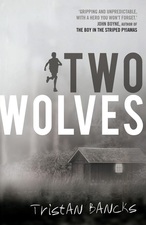
His newest work, Two Wolves deviates from his usual comedic, witty writing style and delves into more serious territory taking five years to complete. Using Scrivener and writing several unplanned drafts, Two Wolves took a lot longer for Tristan to piece together, but overall he was able to achieve a raw novel.
That raw edge certainly grips the story’s main protagonist Ben Silver, nicknamed ‘Cop’ by his dad, who suddenly finds his life is speedily packed up after a visit from the police. Ben realises his family is on the run, and as a burgeoning detective he solves the mystery of what his parents have done. His only question is what does he do with this information. To tell or not to tell? Another book I think I’ll have trouble putting down.
For more information on Tristan’s work, visit his website tristanbancks.com.
That raw edge certainly grips the story’s main protagonist Ben Silver, nicknamed ‘Cop’ by his dad, who suddenly finds his life is speedily packed up after a visit from the police. Ben realises his family is on the run, and as a burgeoning detective he solves the mystery of what his parents have done. His only question is what does he do with this information. To tell or not to tell? Another book I think I’ll have trouble putting down.
For more information on Tristan’s work, visit his website tristanbancks.com.
Belinda Murrell
What a pleasure for me to both meet and hear from Belinda for the first time. With 21 books under her belt, I couldn’t wait to soak up all Belinda had to say. Undoubtedly, Belinda loves children’s literature and I think she could talk endlessly about writing for children.
Well, it’s no wonder Belinda became a writer, considering her family’s writing pedigree. Belinda is a sixth generation writer, hailing back to her great, great, great, great Grandfather who wrote a non-fiction book on the colony of New South Wales. Not in the least to be outdone by her great, great, great, great Grandmother who wrote the first children's book published in Australia. Seriously, her siblings are also well-known authors, Kate Forsyth and Nick Humphrey. That’s what I call a literature family tree!
What a pleasure for me to both meet and hear from Belinda for the first time. With 21 books under her belt, I couldn’t wait to soak up all Belinda had to say. Undoubtedly, Belinda loves children’s literature and I think she could talk endlessly about writing for children.
Well, it’s no wonder Belinda became a writer, considering her family’s writing pedigree. Belinda is a sixth generation writer, hailing back to her great, great, great, great Grandfather who wrote a non-fiction book on the colony of New South Wales. Not in the least to be outdone by her great, great, great, great Grandmother who wrote the first children's book published in Australia. Seriously, her siblings are also well-known authors, Kate Forsyth and Nick Humphrey. That’s what I call a literature family tree!

Excitingly, Belinda has three books coming out. The Sequin Star is the next novel in her timeslip series, which follows Claire who finds herself stranded and working for the Sterling Brothers Circus during the Great Depression of 1932. But one day, her circus friend Kit, is kidnapped.
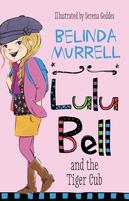
Belinda also has two more books released in the ever popular Junior Fiction Lulu Bell series, namely Lulu Bell and The Tiger Cub and Lulu Bell and the Pyjama Party. The Lulu Bell series is close to home for Belinda, whose father is a vet and she spent her childhood surrounded by animals. This lead to Belinda creating the lovable eight year old Lulu Bell who grows up in a vet hospital and follows her adventures with friends, family and, of course, animals.
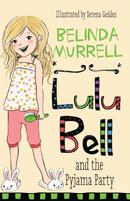
Check out Belinda’s website, belindamurrell.com.au to find out more about the other novels in her series.
This writing outing was definitely worth going to see these three incredible authors talk about their work. My reading pile, well after this, grew a lot bigger! Hope you enjoy reading these authors and their new titles as well.



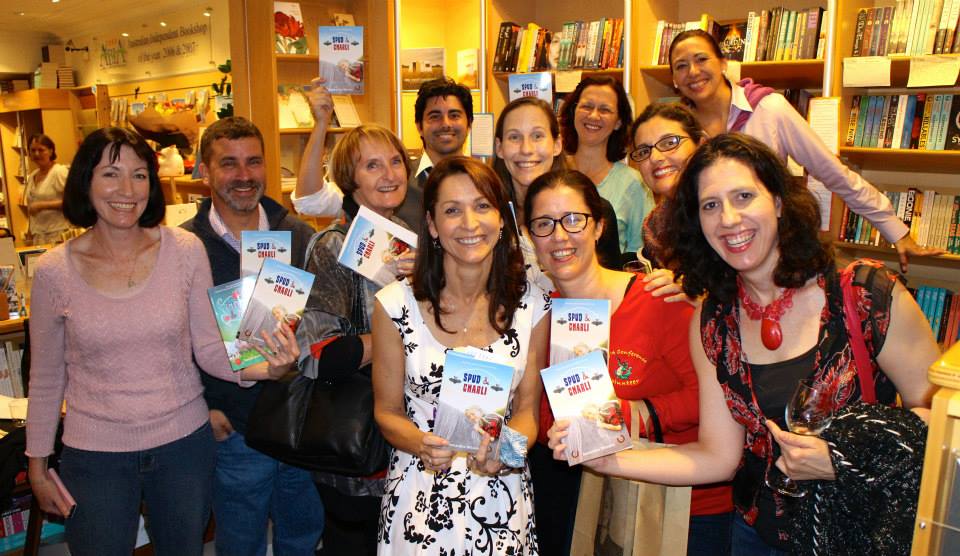








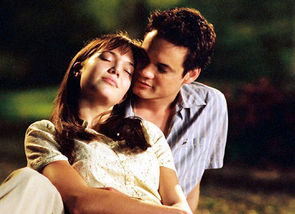


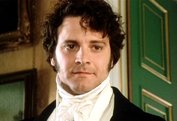

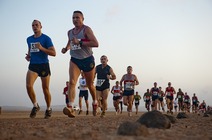

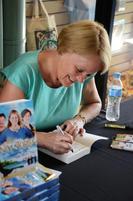





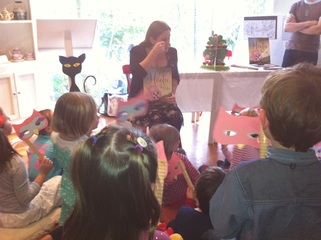










 RSS Feed
RSS Feed
